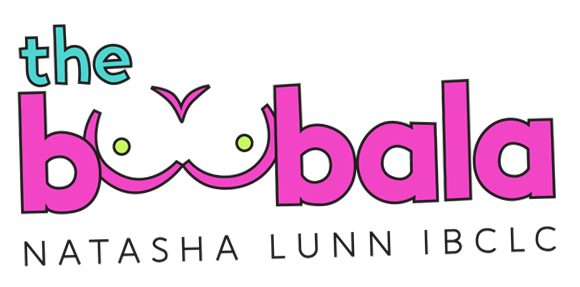Page Content
- Does pumping burn as many calories as breastfeeding?
- Is 2 oz of breastmilk the same as 2 oz of formula?
- Do you burn 500 calories every time you breastfeed?
- Do breastfed babies drink more than 4oz?
- How many calories do you burn per oz of breastmilk?
- How many calories are in a 4 oz bottle of breastmilk?
- Is breastfeeding like running 7 miles?
- What foods make breastmilk more fatty?
- Is breastmilk more caloric than formula?
- Does pumping burn same calories as breastfeeding?
Understanding the Caloric Content of Breast Milk
Breast milk is often hailed as a nutritional powerhouse, essential for the growth and development of infants. One of the key aspects of this vital fluid is its caloric content, which plays a crucial role in meeting the energy needs of growing babies.
Caloric Value per Ounce
On average, breast milk contains approximately 20 to 22 calories per ounce. This slight variation can depend on several factors, including the mother’s diet, the time of day, and the specific stage of lactation. For instance, the caloric content can fluctuate throughout a single feeding, as the fat content in breast milk changes, affecting the overall calorie count.
Factors Influencing Caloric Content
The composition of breast milk is dynamic. It is known to vary not only from one feeding to another but also throughout the day. For example, milk produced in the evening may be richer and contain more calories compared to milk produced earlier in the day. Additionally, the fat content, which is a significant contributor to the caloric value, can change dramatically based on the mother’s nutritional intake and hydration levels.
Implications for Infant Nutrition
Understanding the caloric content of breast milk is vital for parents and caregivers as they monitor their infant’s growth and nutritional needs. The average caloric intake from breast milk is generally sufficient for most infants, but it is essential to ensure that babies are feeding adequately to meet their energy requirements.
In summary, breast milk typically provides 20 to 22 calories per ounce, making it a crucial source of energy for infants. This caloric value, while relatively consistent, can vary based on several factors, underscoring the importance of a well-balanced maternal diet to support optimal milk production and quality.
Does pumping burn as many calories as breastfeeding?
Since a breast pump mimics a baby sucking at the breast, your body responds similarly when it comes to the metabolic response. But while both pumping and breastfeeding burn calories, breastfeeding tends to be more efficient and therefore moms who breastfeed do it more often, burning more calories in the long run.
Is 2 oz of breastmilk the same as 2 oz of formula?
Try not to compare the amount of breastmilk in a bottle to formula in a bottle because they will mostly likely be different. Breastfed babies typically eat less at a feeding because breastmilk has more nutrients per ounce, and babies digest breastmilk more fully than formula.
Do you burn 500 calories every time you breastfeed?
It comes down to your body and the amount you breastfeed. “Exclusive breastfeeding typically burns about 500-700 calories per day, less if partially breastfeeding,” says Kecia Gaither, M.D., who is double board-certified in OB-GYN and maternal-fetal medicine.
Do breastfed babies drink more than 4oz?
The amount that your baby takes will increase as they grow, but breastfed babies will generally max out around 4-4.5oz per feeding around 6 weeks old. It can also vary slightly depending on how frequently they eat. After your full milk supply is reached, you will NOT need to continue to make more and more breastmilk.
How many calories do you burn per oz of breastmilk?
20 calories
There’s a simple math trick to figure this out – each ounce of breast milk takes about 20 calories to make. So if you pump twenty ounces of breast milk daily, you burn 400 calories from producing breast milk. Calculating calories burned by breastfeeding is as simple as measuring your milk supply output.’);})();(function(){window.jsl.dh(‘lFBoZ4O9Btf5kdUPwbzpwAI__32′,’
How many calories are in a 4 oz bottle of breastmilk?
22 Calorie
22 Calorie Pasteurized Donor Human Milk (4 oz bottle)
High Calorie full term milk is 22 calories per ounce or higher.’);})();(function(){window.jsl.dh(‘lFBoZ4O9Btf5kdUPwbzpwAI__44′,’
Is breastfeeding like running 7 miles?
The metabolic energy needed to breastfeed a baby each day is the amount you’d use to walk seven miles! Current breastfeeding rates (reported in 2016) showed that 81% of infants are breastfed initially, 51% are still breastfeeding at 6 months, and 31% have continued to breastfeed at 12 months.
What foods make breastmilk more fatty?
Incorporate More Healthy Fats into Your Diet
They are typically found in nuts, salmon, avocados, seeds, eggs, and olive oil. These types of fats are important for both you and your baby’s diet. What you eat, your baby will also eat in some form.
Is breastmilk more caloric than formula?
Breastmilk overwhelmingly averages to 20 calories per ounce and that is why formula is designed to be 20 calories per ounce. Some studies have even shown more like 21 or 22 calories per ounce iirc.
Does pumping burn same calories as breastfeeding?
Since a breast pump mimics a baby sucking at the breast, your body responds similarly when it comes to the metabolic response. But while both pumping and breastfeeding burn calories, breastfeeding tends to be more efficient and therefore moms who breastfeed do it more often, burning more calories in the long run.

